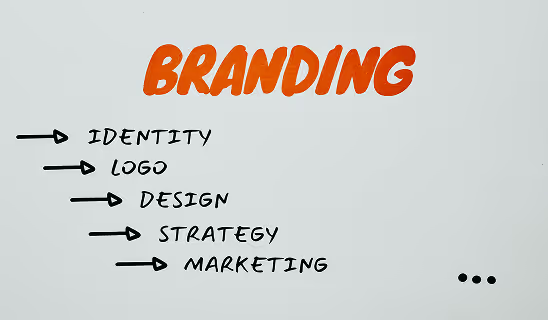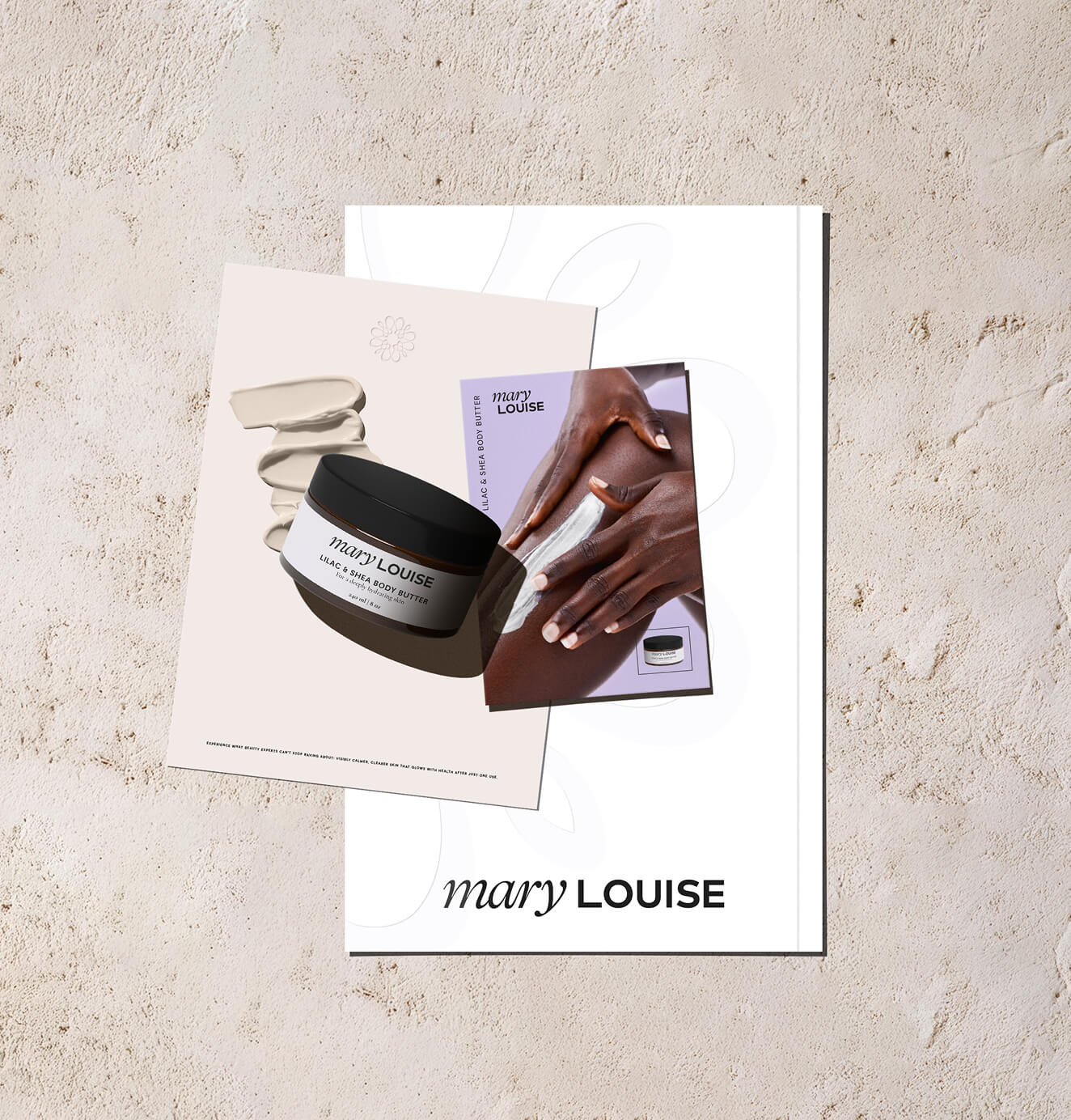Mastering the Brand Positioning Framework: 4 Vital Questions to Ask Yourself and More
08/08/2025
Branding
Learn how to master the Brand Positioning Framework by asking four vital questions that define your brand’s purpose, promise, and unique place in the market.

Are you tired of hearing about “brand positioning” without actually knowing what it means or how to achieve it? Well, fear not, my fellow brand enthusiasts, because today, we’re diving into the world of brand positioning frameworks! First things first, let’s define our terms. Brand positioning refers to the process of creating a unique image and reputation for your brand in the minds of your target market. It involves identifying your target audience, understanding their needs and desires, and then crafting a brand promise that speaks directly to them. Now, onto the framework itself.
.png)


A Guide to Brand Positioning Strategy and Framework



A brand positioning model typically consists of three key elements: your target market, your brand promise, and your brand positioning strategy. Your target market is the group of people you want to reach with your brand message, while your brand promise is the specific benefit or value that you promise to deliver to them.
Your compelling brand positioning strategy, on the other hand, is the plan you put in place to communicate that promise and differentiate yourself from competitors.
But here’s the thing: simply having a framework in place isn’t enough. To truly stand out in a crowded marketplace, you need to be bold and innovative in your approach.
Maybe that means taking a stand on a controversial issue, or using humor to grab your audience’s attention. Whatever it is, don’t be afraid to think outside the box and take risks.
So, what does an effective brand positioning strategy look like?
Well, that depends on your unique brand and target market.
But some general tips include: being consistent in your messaging and visual identity, using social media to engage with your audience and build a community, and staying true to your brand promise at all times.
A brand positioning framework is a powerful tool for creating a strong, memorable brand image.
But it’s up to you to be bold and creative in your execution.
So go forth, fellow brand warriors, and position your brand like the badass it deserves to be! Keep reading for our step-by-step process.
In today’s market, having a strong brand positioning and brand strategy is more important than ever.
With so many competitors vying for attention, it’s essential to differentiate your brand and communicate the unique value it offers to potential customers.
A brand positioning framework can help guide this process by outlining how each element of the brand can convey key values and qualities synonymous with the company.
This can include factors such as brand personality, target audience, unique selling proposition, and competitive analysis.
In this blog, we’ll explore the importance of brand positioning and brand strategy, and provide real-world examples of effective frameworks used by successful brands.
So whether you’re a startup looking to establish your brand or an established company looking to refresh your image, this blog is for you.
Let’s dive into the world of brand positioning and strategy.
What is a brand positioning strategy?












Brand positioning strategy refers to the process of creating an image for your brand that makes it unique and memorable in the minds of your target audience.
It involves identifying the key values and qualities that you want your brand to be associated with, and communicating these to your customers through various channels such as advertising, packaging, and customer experience.
Why is brand positioning strategy important?
Brand positioning strategy is important because it helps your brand stand out from competitors in a crowded market. By establishing a clear and distinct image for your brand, you can attract and retain customers who share your values and beliefs.
This can also lead to increased brand loyalty, repeat business, and referrals.
What are some examples of brand positioning strategies?
Some examples of brand positioning strategies include:
- Volvo: "safety"
- Apple: "innovation"
- Coca-Cola: "happiness"
- Nike: "athletic performance"
- Dollar Shave Club: "affordable luxury"
How do I create a brand positioning strategy?
To create a brand positioning strategy, you should start by defining your target audience and understanding their needs, wants, and pain points. Then, identify the key values and qualities that you want your brand to be associated with, and develop a messaging framework that communicates these to your customers.
Finally, ensure that all aspects of your brand, from your logo and packaging to your customer service and social media presence, are aligned with your brand positioning strategy.
How do I know if my brand positioning strategy is effective?
You can measure the effectiveness of your brand positioning strategy by tracking metrics such as brand awareness, customer engagement, and sales. You can also conduct surveys and focus groups to get feedback from your target audience about their perceptions of your brand.
If your brand positioning strategy is effective, you should see an increase in brand loyalty, repeat business, and referrals.
What Is Brand Positioning?
When you’re selling a product or service, chances are you’ve already thought about the emotions or reactions you want to evoke - this is the act of looking to position your brand in a specific way.
Brand positioning is the process of deciding how you want customers to think of you.
Done right, it’s a strategy that sets your company apart from the rest by establishing a strong brand position.
And it goes much further than creating a unique logo or a signature brand colour.
In fact, you won’t find brand positioning statements on shelf stores or on product packages. It’s an internal exercise that drives every decision the company makes.
It will seep into every layer of your company’s process - from the visual design, to what you say, how you say it and to whom.
It even influences the types of products you offer and how you market it.
And your brand positioning starts and ends with the customer.
Looking for all the answers but don't know where to start?
The Benefits of Brand Positioning
Brand positioning statistics published in 2018 reveal that when a brand establishes a positive emotional connection with its customers, it has successfully positioned itself–a whopping 94% of people say they would highly recommend a brand they were emotionally engaged with.
Having a strong and memorable brand position comes with a long list of benefits.
Here are just a few:
- People think of your brand first when they’re ready to make a purchase.
- You have a better understanding of your target customers’ needs, desires and frustrations.
- Customers can clearly differentiate your brand from competitors’.
- Customers don’t question having to pay a higher price point.
- With a clear understanding of where the brand is positioned in the market, your company gets to speed up the decision-making process around marketing, branding and even product development.
Your brand positioning will also influence every other aspect of your brand, from the brand strategy, to the brand personality.
4 Questions To Position Your Brand
When it comes to finding out how to position your brand, there are a couple of things to always, always keep in mind (tattoo these onto your intern's forehead if you have to):
- What your competitors are offering
- How your product or service is better than theirs
In short, this is where you deep dive into some research on how you can solve your customers' problems in a way your competitors can't.
Of course, you'd want to carry out an honest evaluation here instead of a toot-your-own-horn exercise (no matter how tempting that can be!).
If you want help finding unbiased insights on your business and the marketplace it wants to dominate, get in touch with us and we'll help you find your most effective brand positioning.
Here at The Branded, we use a variety of mind maps, conceptual maps and frameworks to build out our clients' brand positioning strategies.
One of the simplest ways to do this is to start with completing these 4 steps:
- Who is it for? Can you quickly define who your ideal target customer is?
- What are you selling? What market is your brand competing in, and what product or service.
- How does your product or service help? Define the key benefits and why they would answer your ideal customer's needs and wants.
- How do you stand out? How is your product or service unique and different to your competitors?
Once you've answered all four questions, you've got a good foundation to create a solid positioning statement.
You can use this simple formula to craft your brand positioning statement:
For [who it is for], [what you're selling] will [how the product helps] because only WE offer [how you stand out].
Let's take this brand positioning statement formula and apply it to a well-known favourite, Nike:
“For runners of all abilities, Nike is the shoe and apparel provider that delivers high performance because only Nike offers top-of-the-line products that will give runners an edge over their competition.”
If you can’t wrap your head around this just yet, don’t worry - we can! We’ll do the formulas and equations for you and carve out a brand positioning statement unique to your brand. Let’s chat about it. We’d love to also hear your brand story.
Want to learn more about brand platforms, Brand Strategy and Brand Identity? Keep reading!
If you need help with your companies brand strategy and identity, contact us for a free custom quote.
Creating A Brand Positioning Map

To visualize how your brand compares to others in the customers’ minds, a brand positioning map is a highly useful tool to use.
The map outlines the strengths and weaknesses of your brand relative to your competitors. It can also help you identify your competitive advantage as well as opportunity gaps in the market.
To create a brand positioning map, you first determine which attributes your customers value when it comes to the product or service you provide. The best way to do this is to carry out some research - use surveys to find out what they look out for and how they rate your brand over your competitors.
You would want to have multiple versions based on different sets of attributes. This way, you’ll be able to visualize your competitive advantage in a certain area over the rest.
A cohesive and focused marketing strategy can then be developed based on the insights gained from the brand positioning map.
Here are some common types of brand positioning attributes that you could use for your brand:
- Quality-Based Positioning Strategy: does your brand offer high-quality products or small-scale craftsmanship that customers are happy to pay a higher price for?
- Price-Based Positioning Strategy: Is your product the most affordable option out there?
- Customer Service Positioning Strategy: Does your service staff consistently receive good reviews and deliver on their promises without fail?
- Convenience-Based Positioning Strategy: Is your product or service more accessible or more user-friendly than others?
- Differentiation Strategy: Is your product or service completely unique in the market? Think of Tesla with its technology packed and beautifully-designed luxury cars unlike anything else in the traditional electrical vehicle market.
In the case of Amazon, they build their competitive advantage through a few strategies - extraordinary convenience and low prices.
Jeff Bezos claimed, “I didn’t want to repeat the mistake of Steve Jobs — pricing the iPhone in a way that was so fantastically profitable that the smartphone market became a magnet for competition”.
In Bezos’ mind, high-profit margins justified rivals’ investments in research and development but attracted more competition, while low margins attracted more customers. And of course, we can all agree he did something right there.
When you craft your brand position, your potential customers are the absolute key here - what are their buying behaviours like? What pain points do they need solved? Do they like saving money, or do they prefer to spend a little more on quality or the latest technology?
From there, you start having a clearer picture of the approaches you can take to create a positioning strategy capable of building affinity and trust with your customers.
The Golden Circle - Telling Your Story

If you find yourself scratching your head while attempting to find the ‘differentiating factor’ of your brand, employing the use of the Golden Circle might help.
Most brands will tell their customers what to do: Buy this, click here. Often, they leave out a crucial part: why should they do it? Why should they ‘buy this', instead of ‘buying that' from somewhere else?
Are you giving your customers a laundry list of the items you're selling, or are you compelling them with a good story on why they should pick you?
The Golden Circle concept was created by Simon Sinek in an attempt to explain how some brands are able to differentiate themselves from their competitors - by telling a story capable of evoking emotions and getting customers to take action.
The Golden Circle is a target, and brands should aim to hit the bull's eye in order to compel customers.
- Why - Your brand’s core belief and why it exists. This is your brand purpose.
- How - The unique process and specific actions your company undertakes on a daily basis in order to realize the ‘why’.
- What - Finally, define what it is you do. Your ‘what’ will be dictated by your ‘why’ and ‘how’. Why + How = What.
For example, Amazon's ‘why' or brand purpose is “to be earth's most customer-centric company; to build a place where people can come to find and discover anything they might want to buy online.”
Your ‘why' is what drives the brand (besides just wanting to turn a profit). It is what motivates the entire company to keep on plowing through all the adversity and come out victorious. And best of all, it tells a damn good story of why your customers choose you, and why others should too. Never take your aim off that bull's eye, baby!
Here are some very specific step by step branding guides for: Real Estate, Lawyers, Accounting, Doctors, Dentists, Optometrists, Jewellery, Makeup & Beauty, Skincare, Pet Food, Fashion and Construction.
Time To Get Into Position
To recap, there are a few things to cover when you’re crafting a brand positioning.
- Answer these 4 vital questions: Who is it for? What are you selling? How does your product or service help? How do you stand out?
- Do a deep dive into market research and visualize your competitive advantage with a Brand Positioning Map
- Tell a compelling story by defining your brand purpose - your ‘why’
Once you’ve covered all 3 steps, you can tell a brand positioning strategy is effective if it ticks all these boxes:
- Clear and single-minded
- Empowers growth-based decision making
- Focused on giving the highest value to your ideal customer
- Sustainable
- Scalable
It's also important to keep in mind that what works for another company won't necessarily work for you. As long as you keep the focus on who you're targeting, what you have to offer and who you're competing against, you're well on your way to crafting a strong brand positioning strategy that baits your perfect customer and compels them to take action and BUY your product or service.
Brand positioning can make all the difference between being a shining star or just another unforgettable player in an overcrowded market.
Are you ready to map out your brand positioning?
Take a shortcut and let us craft one out for you!
We're a full-service digital agency that will help you position, launch and scale your brand - all you need to do is give us a nudge and we'll take it from there.
Brand Positioning Strategy FAQs
What is a brand positioning framework?
A brand positioning framework is a tool to map how each element of your brand can convey the values and qualities of your company. This includes things like brand personality, target audience, unique selling proposition and competitive analysis to guide the creation of a strong brand image.
How do I write a brand positioning statement?
To write a brand positioning statement, define your target market, identify the unique value of your product or service and articulate how your brand stands out from the competition. A simple formula is: "For [target market], [brand] is the [category] that [unique benefit] because [reason to believe]."
What is a brand positioning map?
A brand positioning map is a visual tool that compares your brand to the competition based on attributes valued by your customers. It helps you identify your competitive advantage and market opportunities by showing strengths and weaknesses relative to others.
How do I know if my brand positioning is working?
Measure the effectiveness of your brand positioning by tracking metrics like brand awareness, customer engagement and sales. Surveys and focus groups will give you insight into your target audience’s perceptions. Success is when you get repeat business, referrals and increased brand loyalty.
What is a brand promise?
A brand promise is the specific benefit or value you deliver to your customers. It’s a key part of your brand positioning strategy and the foundation of your messaging and customer experience.
What is differentiation in brand positioning?
Differentiation in brand positioning is about highlighting the unique attributes of your product or service that makes it different from the competition. This could be quality, price, convenience, customer service or other factors that matter to your target audience.
How do I do market research for brand positioning?
Do market research by gathering data through surveys, focus groups and competitive analysis. Understand your target customers’ needs, wants and pain points and use this to refine your brand positioning and messaging.
What is the role of customer experience in brand positioning?
Customer experience plays a big role in brand positioning by backing up your brand promise and creating an emotional connection with your customers. Consistent high quality customer service can differentiate your brand and get you loyalty.
What are some brand positioning examples from other brands?
Examples of successful brand positioning:
- Amazon: Customer-centric convenience and low prices
- Tesla: Innovative technology and luxury in the electric vehicle market
- Zappos: Exceptional customer service
How can a brand positioning framework help my marketing?
A brand positioning framework helps your marketing by giving you a clear direction on how to communicate your brand’s unique value and differentiate yourself from the competition. It ensures consistency across all marketing activities and increases brand recognition and loyalty.
What is a good brand positioning?
A good brand positioning is one that clearly communicates your brand’s unique value proposition in a way that speaks to your target audience. It’s bold, innovative and consistent and uses emotional connections to build your brand.
What are positioning statements and why are they important?
Positioning statements are short descriptions of your brand’s unique value and how it meets the needs of your target audience. They are important because they govern all branding and marketing activity so your messaging is aligned to your brand strategy.
How do I build a brand positioning?
Build a brand positioning by doing market research, defining your target market, stating your unique value proposition and communicating your brand promise across all customer touchpoints. Review and adjust regularly based on market feedback and performance metrics.

Sloane Avery
As entrepreneurs, they’ve built and scaled their own ventures from zero to millions. They’ve been in the trenches, navigating the chaos of high-growth phases, making the hard calls, and learning firsthand what actually moves the needle. That’s what makes us different—we don’t just “consult,” we know what it takes because we’ve done it ourselves.
Want to learn more about brand platform?
If you need help with your companies brand strategy and identity, contact us for a free custom quote.
We do great work. And get great results.
+2.3xIncrease in revenue YoY
+126%Increase in repurchase rate YoY








+93%Revenue growth in first 90 days
+144% Increase in attributed revenue








+91%Increase in conversion rate
+46%Increase in AOV








+200%Increase in conversion rate
+688%Increase in attributed revenue












